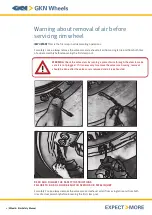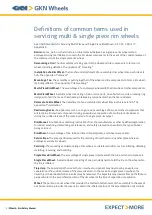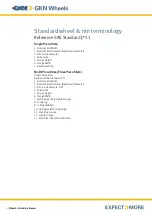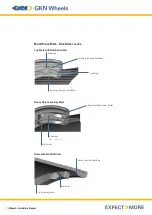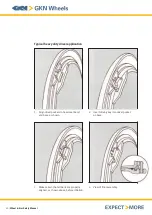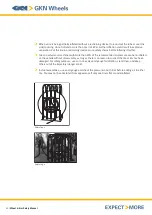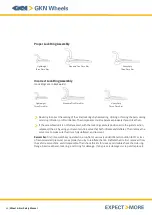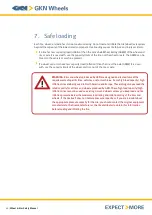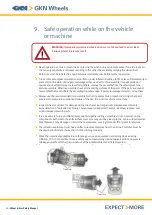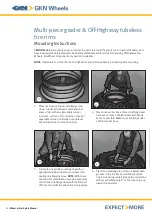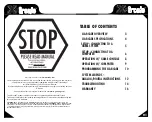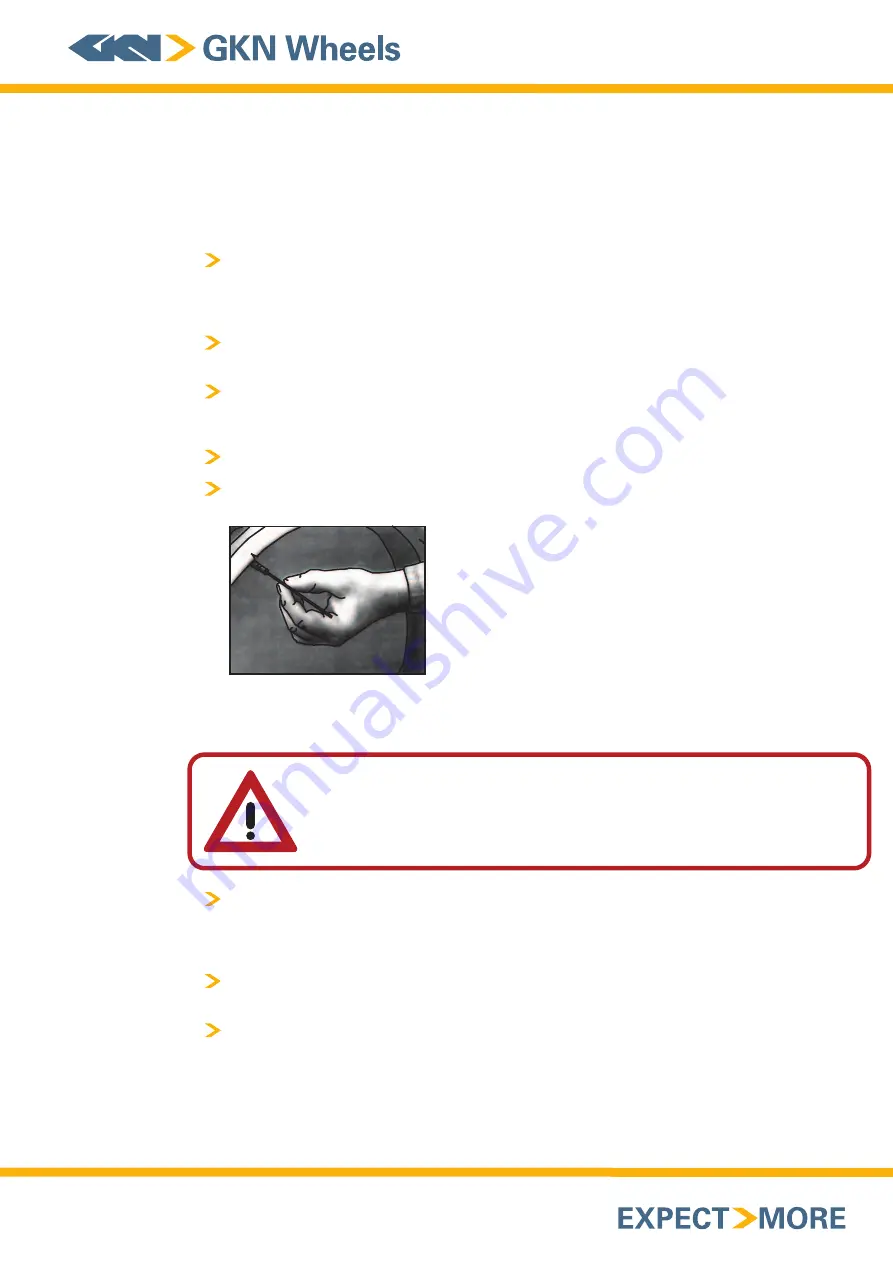
1. Importance of deflation before servicing
15 |
Wheel & Rim Safety Manual
Always deflate both tires in a dual assembly completely before removing an assembly from the
vehicle or machine or a tire from a rim wheel. Unseen damage could cause the assembly to explode
during removal if the tire is removed while it is still inflated. See OSHA
Standard for Servicing Multi-
Piece
and
Single Piece Rim Wheels, 29 C.F.R. 1910.177, Appendix A.
Remove the valve core to ensure the tire is completely deflated before loosening any nuts or clamps
or removing the assembly.
Foreign materials may clog the valve stem during deflation or ice may form as air leaves the tire.
Run a piece of heavy wire through the valve stem to make sure that no more air is in the tire and that
debris or other objects have not clogged the valve.
If working on a dual assembly, separately perform each step for each tire.
Never deflate the tire near sparks or open flames.
Run a wire through the valve stem to
ensure tire is completely deflated.
WARNING:
Do not add air to tires that have been operated in an underinflated or flat
condition. Adding air can cause the rim wheel to separate explosively. The explosion
can cause serious or fatal injury.
Always deflate, remove from the vehicle or machine, disassemble, and inspect a tire and rim
assembly that has been operated in a run-flat or underinflated condition (80% or less of
recommended pressure). See OSHA Standard for Servicing Multi-Piece and Single Piece Rim Wheels,
29 C.F.R. 1910.177, Appendix A.
Do not stand in front of a rim wheel while deflating the tire. In case of an explosive disassembly, you
need to be out of the trajectory (danger zone).
"Eyeballing" or "thumping" a tire does not provide the pressure reading. Always use an air gauge to
measure tire pressure.
Содержание Wheel & Rim
Страница 1: ...Wheel Rim Safety Manual...
Страница 74: ...73 Wheel Rim Safety Manual GKN OffHighway Wheels Products...




